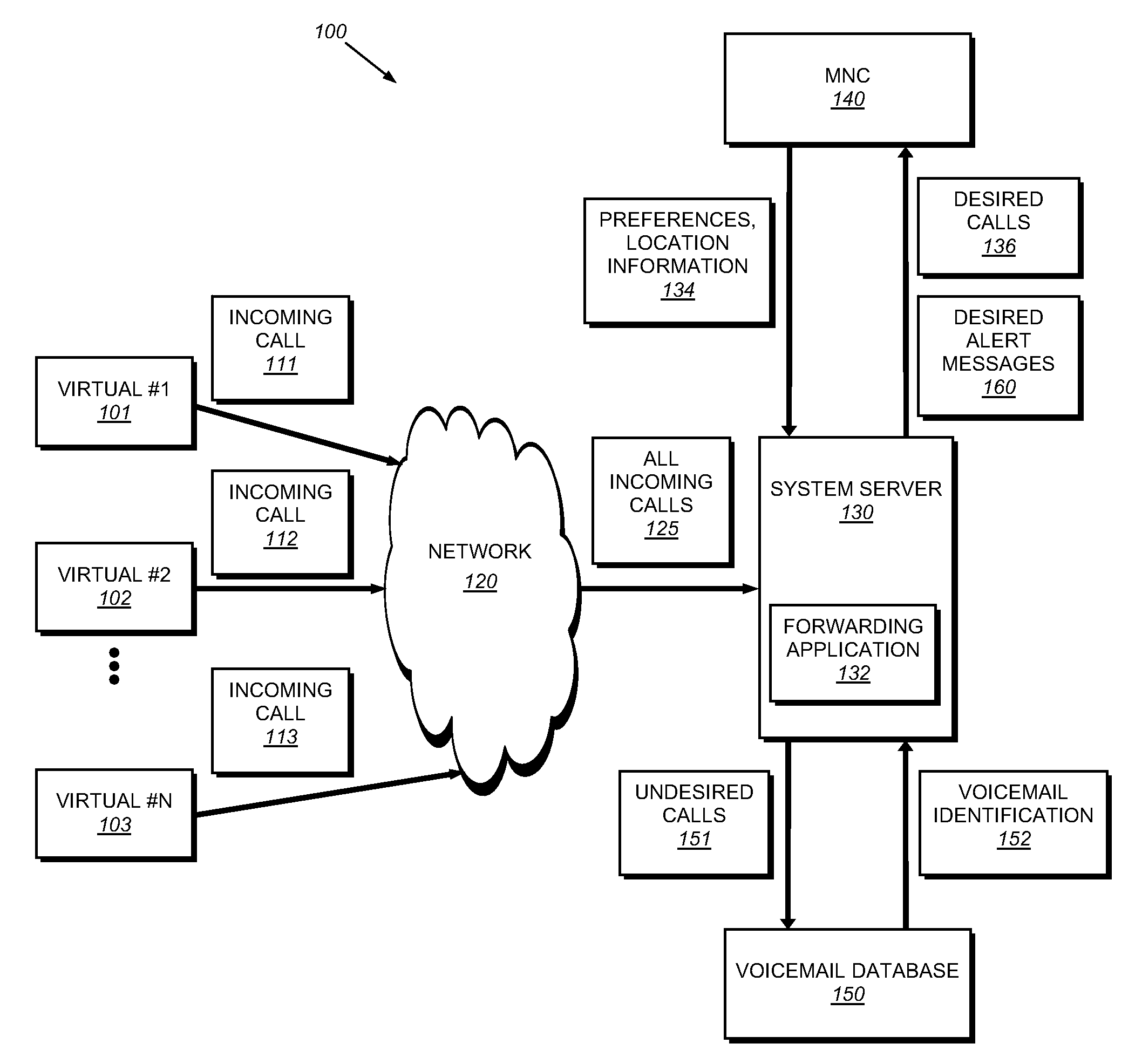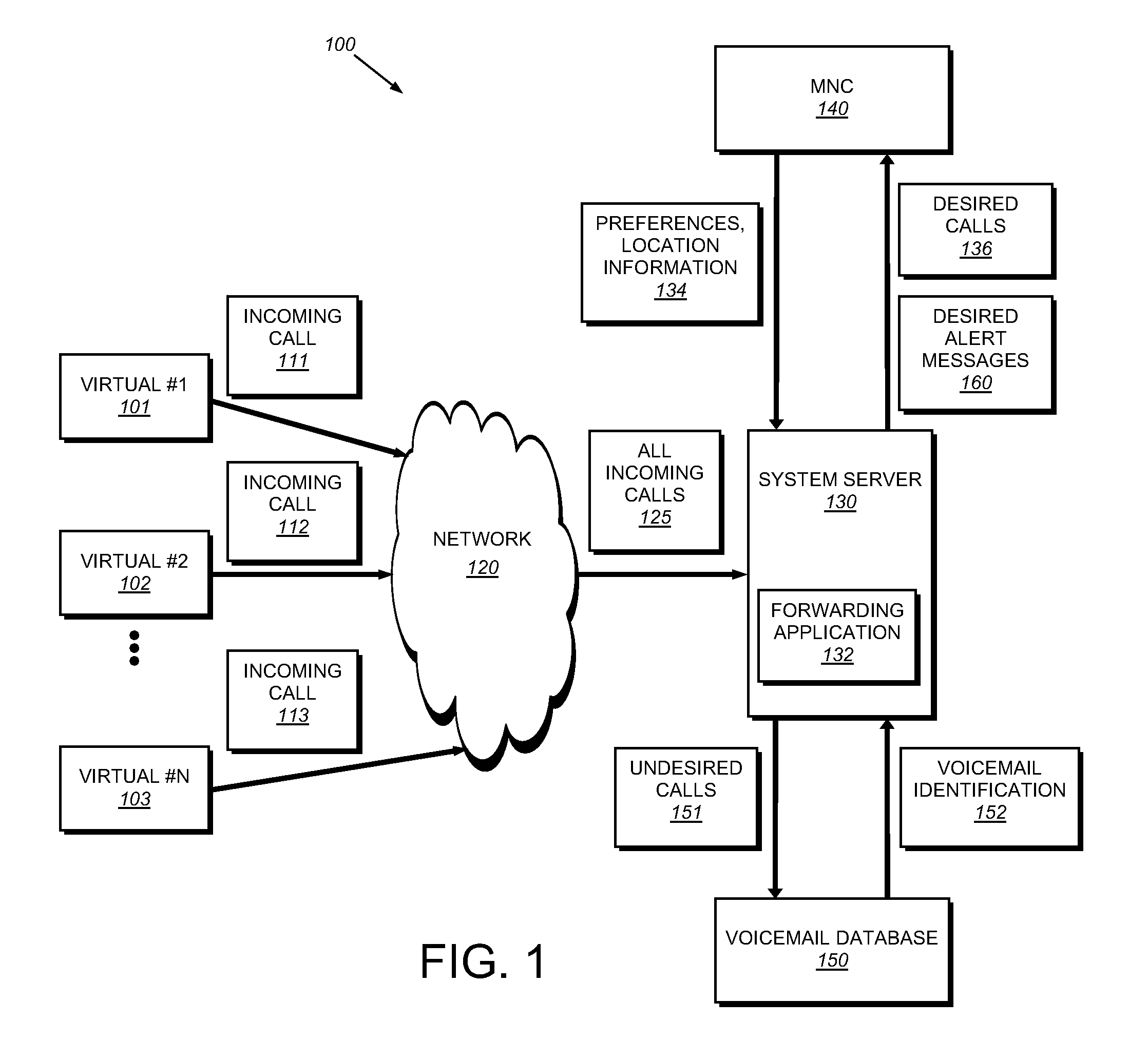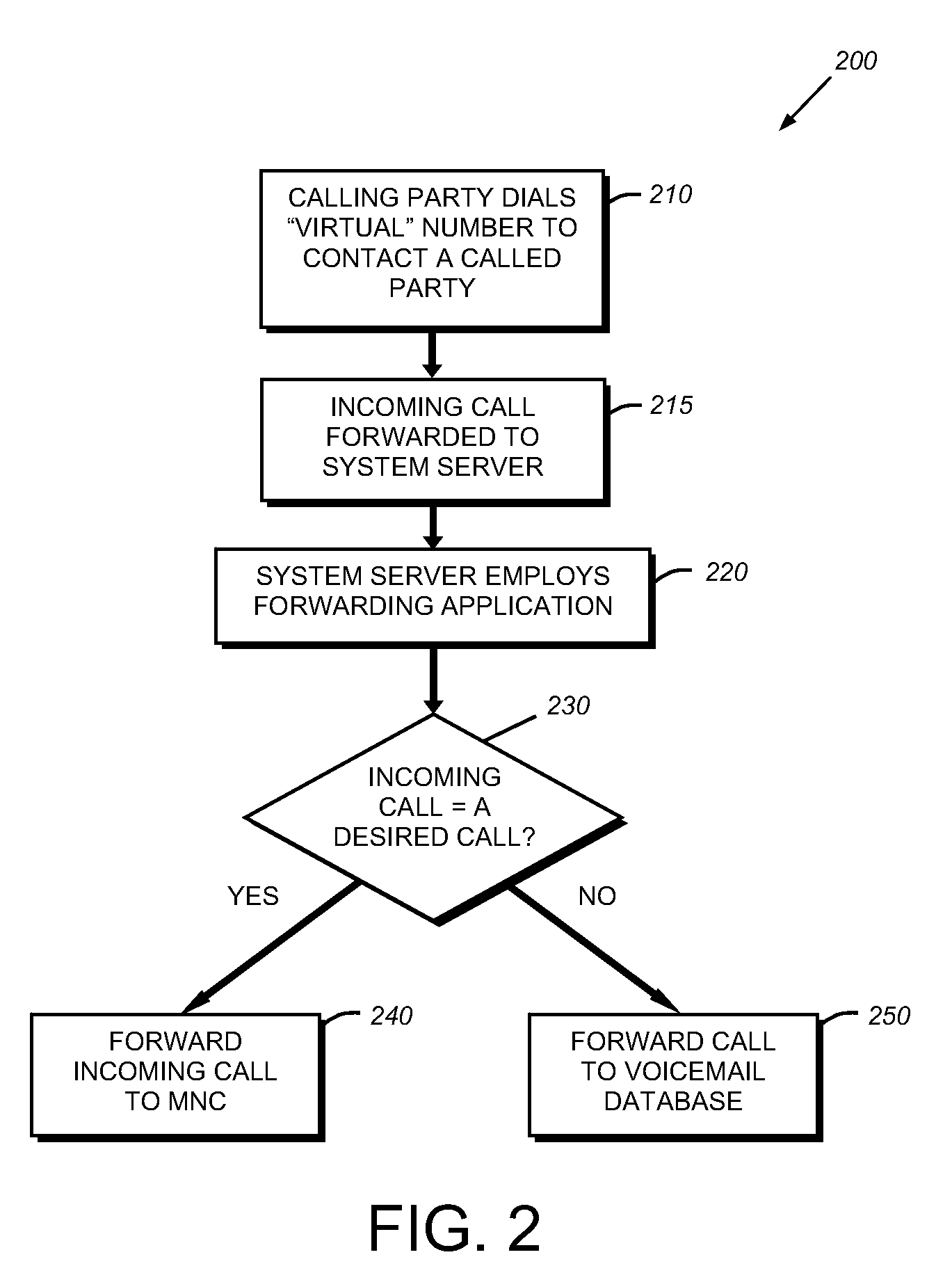Call forwarding system and method employing virtual phone numbers associated with landline and other discrete telephone units
a call forwarding system and virtual phone technology, applied in automatic call answering/message recording/conversation recording, substation equipment, special services for subscribers, etc., can solve problems such as affecting the caller's call, and tending to confuse the caller
- Summary
- Abstract
- Description
- Claims
- Application Information
AI Technical Summary
Benefits of technology
Problems solved by technology
Method used
Image
Examples
Embodiment Construction
[0021]In accordance with an illustrative embodiment there is provided a system and method for forwarding telephone calls to a plurality of “virtual” numbers, associated with a user cellular telephone that has a single “base” number. The base number is the number that the user “owns” as the telephone number representative of the user cellular telephone itself. The virtual numbers are each representative of a distinct entity for the user, according to preferences set by the user that determine when the user desires to receive calls for that particular entity. The entity may be any “location”, real or imaginative, such as a home, office building, virtual office, vehicle, summer home, cellphone, or other entity to which a separate, distinct (“virtual”) number is assigned. The system forwards calls to the called party on a single device, such as a cellular telephone (cellphone), but only when the user desires to receive the call. The user cellphone is described herein as a “Multi-Number ...
PUM
 Login to View More
Login to View More Abstract
Description
Claims
Application Information
 Login to View More
Login to View More - R&D
- Intellectual Property
- Life Sciences
- Materials
- Tech Scout
- Unparalleled Data Quality
- Higher Quality Content
- 60% Fewer Hallucinations
Browse by: Latest US Patents, China's latest patents, Technical Efficacy Thesaurus, Application Domain, Technology Topic, Popular Technical Reports.
© 2025 PatSnap. All rights reserved.Legal|Privacy policy|Modern Slavery Act Transparency Statement|Sitemap|About US| Contact US: help@patsnap.com



